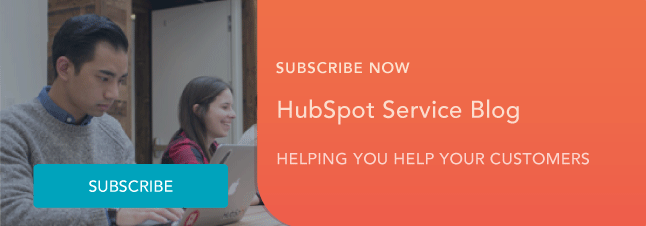In this article, we'll talk more about the importance of customer happiness along with the steps you can take to keep customers happy at your business.
Continue reading or jump ahead:
Customer Happiness
Customer happiness is a combination of the satisfaction and delight your customers feel when interacting with your business. It stems from all aspects of the customer journey based on how well customer needs are met, levels of customer engagement, and customer loyalty over time.
Customer Happiness vs. Customer Satisfaction
Customer happiness and customer satisfaction are often used interchangeably, but the two terms aren't exactly the same.
Customer satisfaction typically measures how a customer feels about a product, service, or company at a specific point in time.
For example, metrics like CSAT measure how satisfied customers are with a particular purchase or business interaction (like a conversation with your support team).
Satisfaction levels contribute to customer happiness. It's one piece of the larger happiness puzzle along with all of the experiences a customer has had with your business.
These terms do have at least one thing in common though: They're both equally as important when it comes to brand loyalty.
Why is customer happiness important?
It's simple —happy customers are more likely to stick around. It also helps that 86% of loyal customers will recommend a brand they love to their friends and family.
Customer happiness is critical for building and retaining your customer base. When you focus on keeping customers happy, you're setting your business up for sustained growth and long-term success.
7 Ways to Keep Customers Happy
- Listen to their pain points.
- Meet customers where they are.
- Build meaningful relationships.
- Personalize the customer experience.
- Maintain customer service standards.
- Offer incentives and rewards.
- Collect feedback and act on it.
We've compiled seven ways to achieve customer happiness.

Let's review each below.
1. Listen to their pain points.
Customers want to feel like they have a voice.
You can keep your customers happy by giving them a forum to communicate with your business and by showing them that you're actively listening to their concerns.
Pro tip: Ask for feedback regularly and document any obstacles that come up in customer conversations. You may be surprised to find that these points of friction are happening to more than just one customer.
2. Meet customers where they are.
It should be easy for customers to communicate with your business.
The best way to make this happen is to give customers the option to reach you on the platforms they're already using. Like if most of your audience is on Instagram, you should be too.
Pro tip: Invest in your omnichannel customer service strategy. Learn which channels your customers use most frequently to communicate with businesses and make sure you have a presence on those channels.
3. Build meaningful relationships.
When it comes to happiness, business relationships are a lot like personal relationships.
The more substance the relationship has, the more valuable it feels. And that substance is created through clear communication, honesty, and empathy.
The same holds true for customer relationships too.
Pro tip: Use CRM software to track, manage, and organize all of your customer interactions. That way, you can easily access customer history data and foster deeper connections when communicating with customers.
4. Personalize the customer experience.
Customers want businesses to recognize them as individuals.
Personalization contributes to customer happiness because it allows you to tailor the customer experience based buyer-specific habits, preferences, and behaviors.
Pro tip: Personalization is more than just calling customers by their name in an email. It's about recognizing that no two customers are alike, and leveraging data to create unique journeys for each customer.
5. Maintain customer service standards.
The data speaks for itself: 99% of consumers think it's important for businesses to have high standards for customer service.
And the standards that are most important to customers include being responsive to inquiries, taking accountability for mistakes, and going above and beyond to meet their needs.
Pro tip: Get your support team aligned on your business standards for customer service. Emphasize them during onboarding and keep them in a centralized location for easy reference on the job.
6. Offer incentives and rewards.
Everybody loves a little extra encouragement and recognition.
Incentives can inspire prospective customers to work with you, and rewards can motivate existing customers to stay and make more purchases.
Pro tip: A loyalty program can help you automate your rewards system for customers. It can be as simple as a loyalty punch card or as involved as a digital reward program with a point system and tiered offerings.
7. Collect feedback and act on it.
This final strategy ties back into giving your customers a voice.
If you ask customers how they feel about your business relationship, most are more than willing to share their thoughts and opinions. It also helps to reach out to customers on a regular basis so your insights are up to date.
Pro tip: Try using different types of customer surveys to gather information. And be sure to ask about multiple aspects of your business so you're getting the full picture.
Customer Happiness Is Key
Keeping your customers happy should be your top priority. Why? Because customer happiness benefits your customers, your business, and your brand reputation.
After all, "There is no way to happiness. Happiness is the way."
Customer Success




![How To Write a CSM Resume [+ Free Templates]](https://53.fs1.hubspotusercontent-na1.net/hubfs/53/customer-success-manager-resume-1-20241031-2293336.webp)







